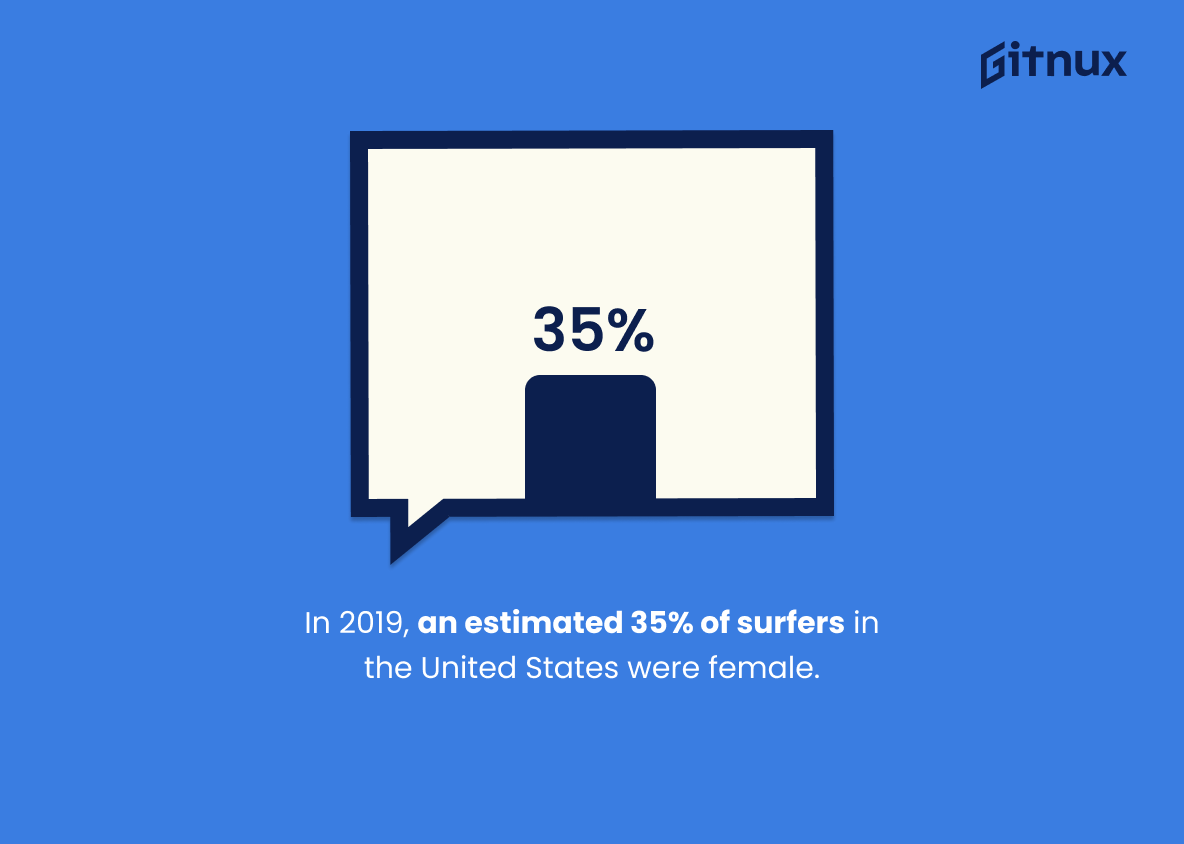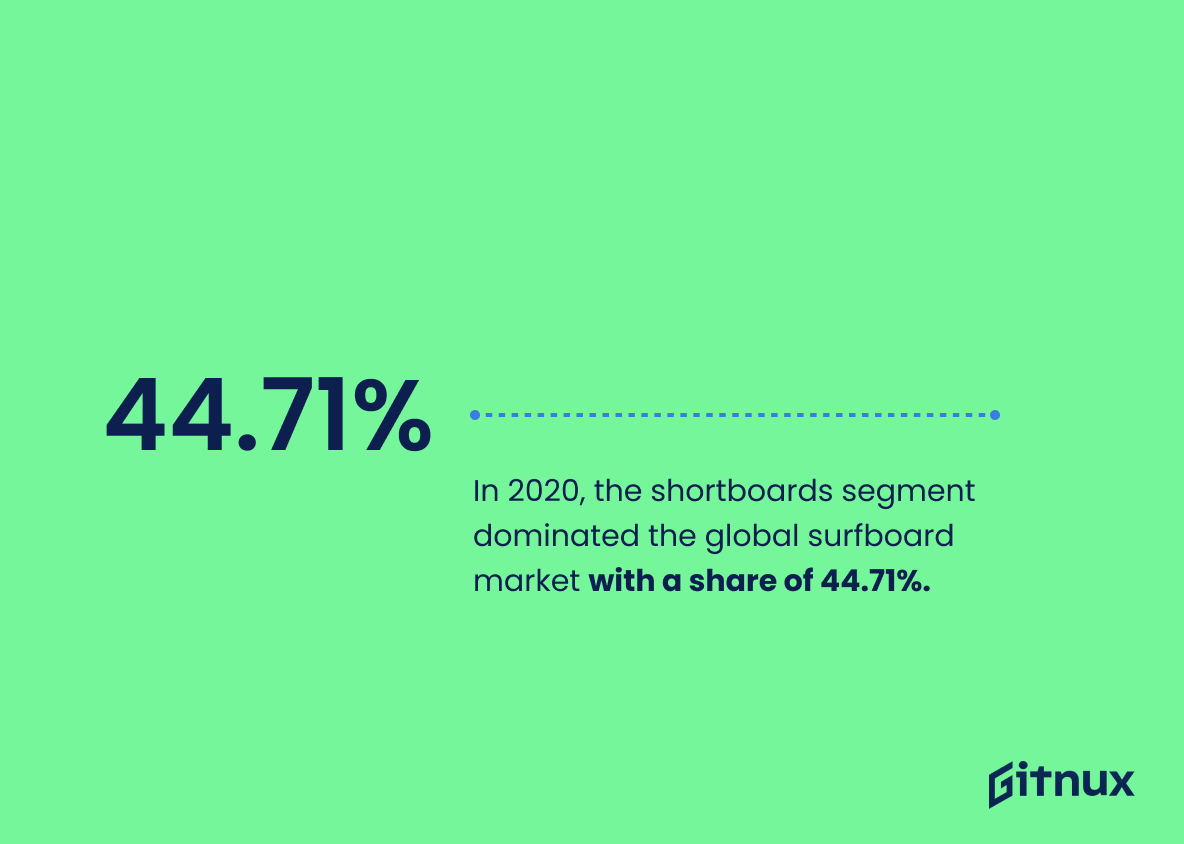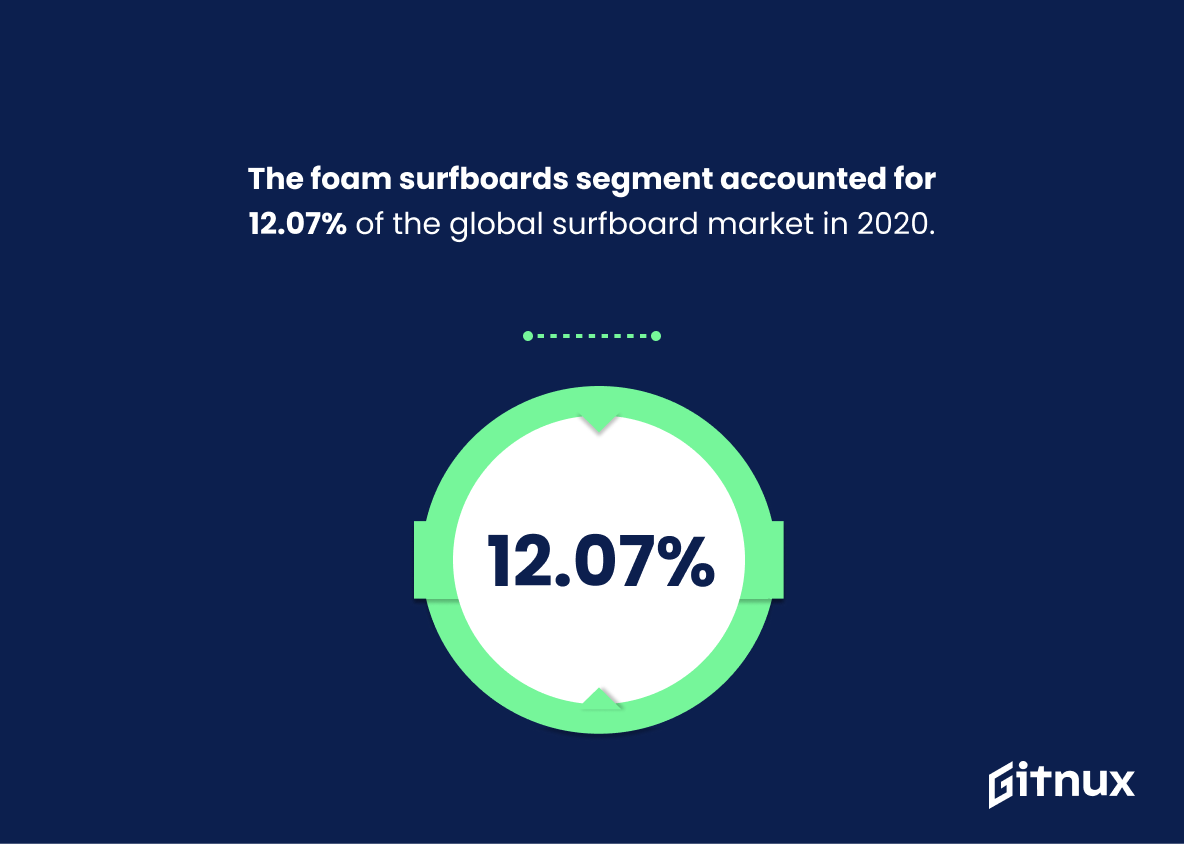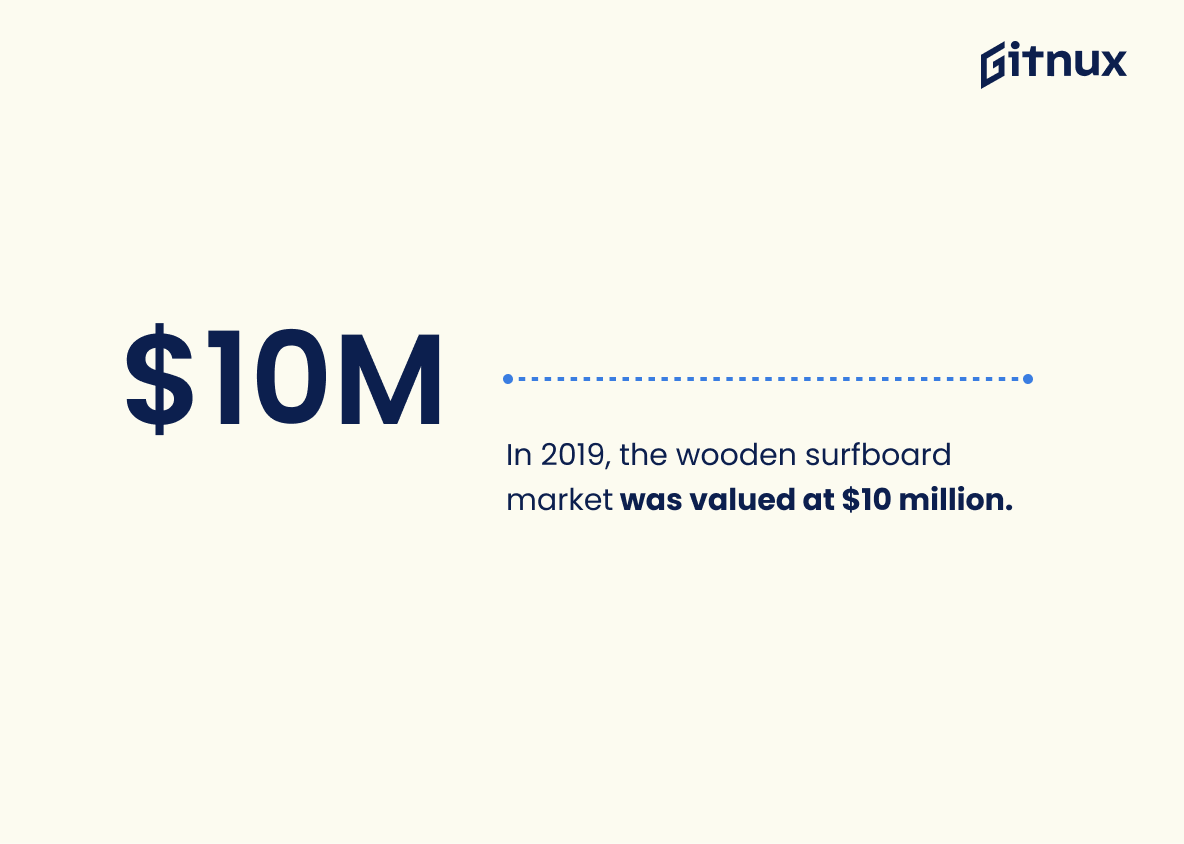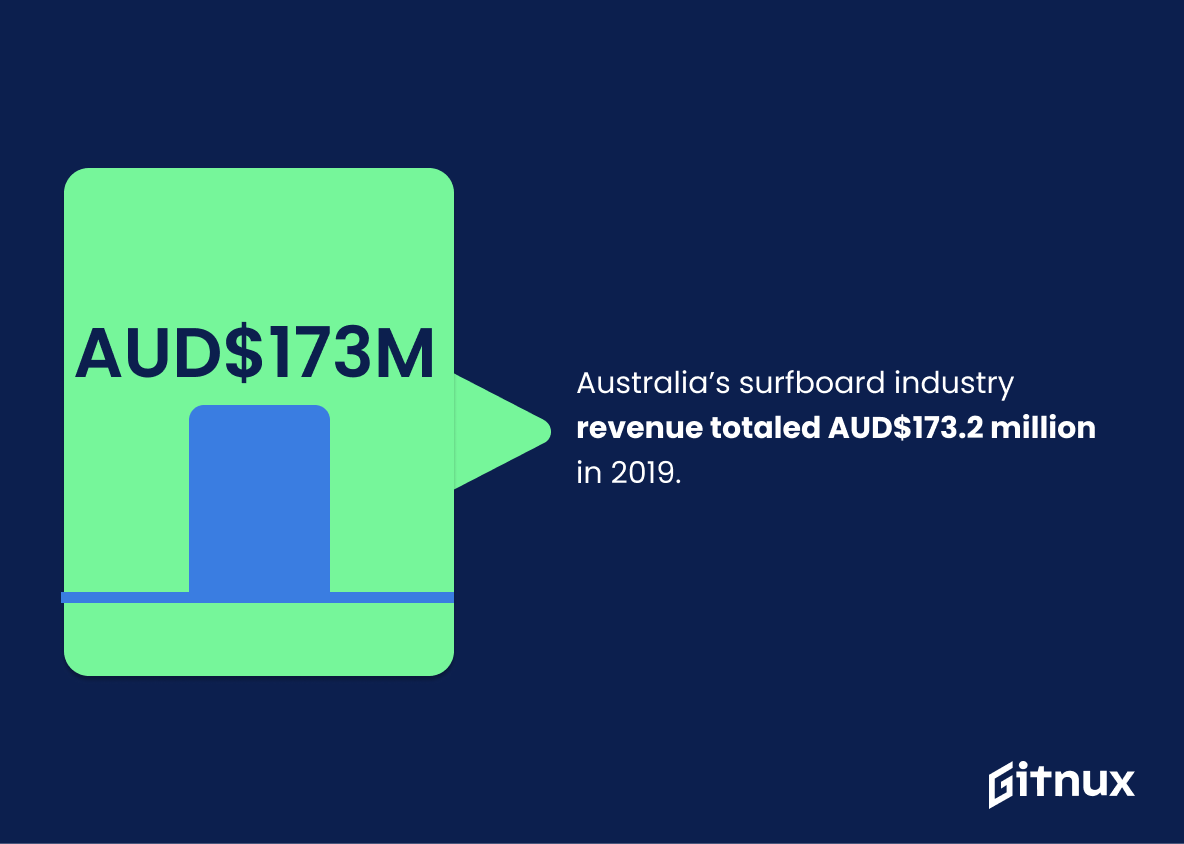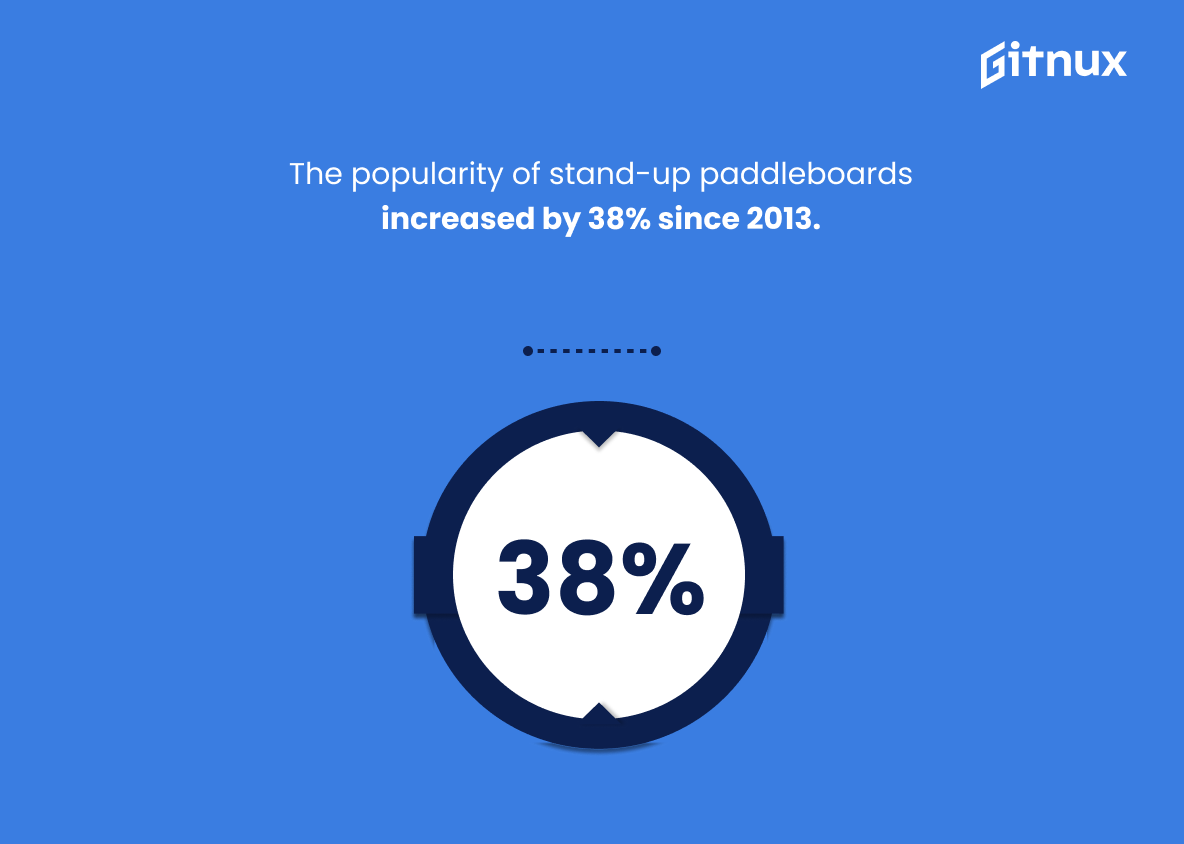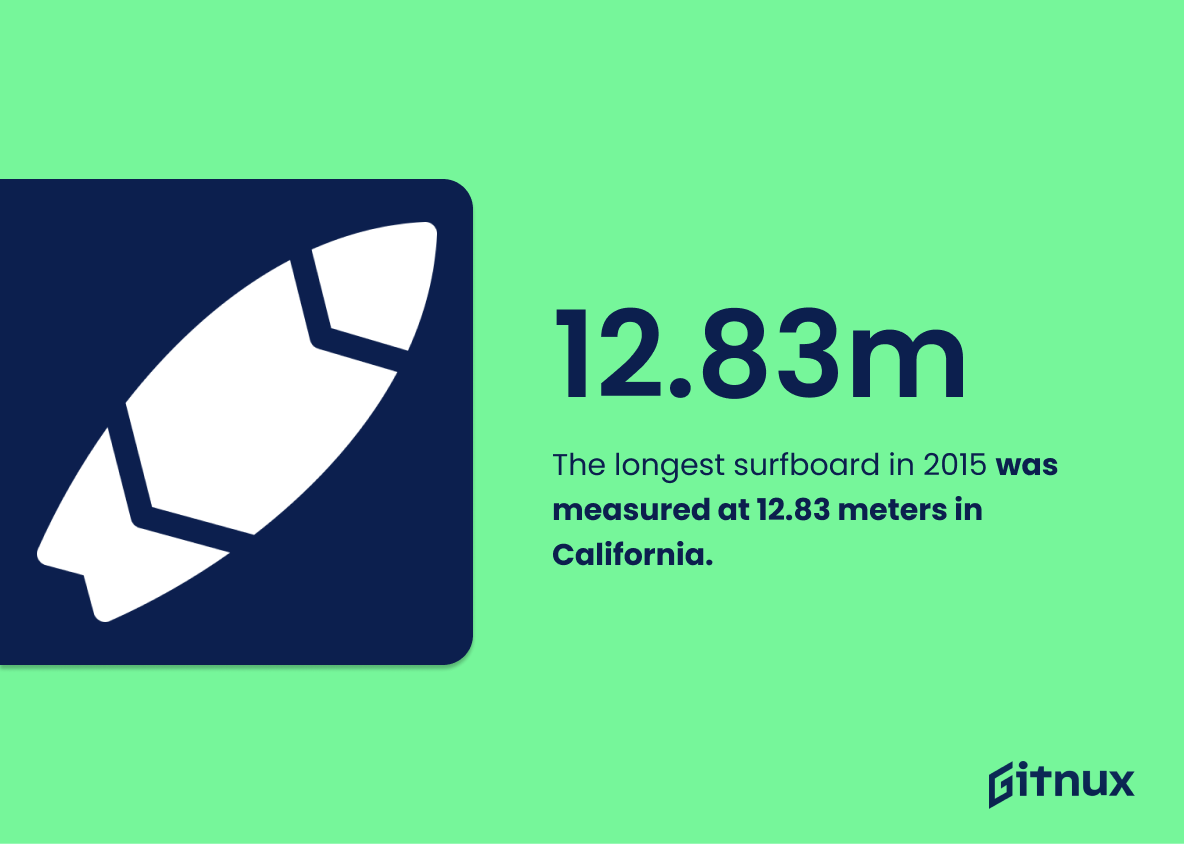The surfboard industry is a rapidly growing market with an estimated global value of $2.21 billion in 2020 and expected to reach $9.5 billion by 2022. The average price for a surfboard ranges from $550 to $1200, while the US surf industry was worth nearly 7.29 billion in 2019 alone. There are over 20 million people worldwide who participate in surfing, with 35% of them being female according to 2019 estimates; this number has been steadily increasing since 2013 when stand-up paddleboards became more popular among enthusiasts at 38%.
In terms of board types, shortboards dominate the global market share at 44%, followed closely by foam boards which account for 12%. Wooden boards have also seen growth recently as their market value reached 10 million dollars in 2019 and eco-friendly models are projected to grow 9.7% CAGR between 2021 and 2028 due to increased environmental awareness amongst consumers globally . In 2018 there were 720 thousand units sold worldwide annually while Brazilians spend 336 million on related products each year – making it one of the most profitable markets out there today. Lastly, 3.3 million Americans participated in surfing activities during 2018 within age brackets 18-24 years old accounting for 16 percent overall participation rate that same year..
Surfboard Industry Statistics Overview
There are over 20 million surfers worldwide.
This statistic is a testament to the sheer size of the surfing community, demonstrating the immense potential of the surfboard industry. With such a large number of people engaging in the sport, the industry stands to benefit from a large and diverse customer base.
In 2019, an estimated 35% of surfers in the United States were female.
This statistic is a powerful indicator of the growing presence of female surfers in the United States. It shows that the sport is becoming increasingly popular among women, which is a positive sign for the surfboard industry. This statistic is a reminder that the industry should be catering to the needs of female surfers, as they are an important and growing demographic.
In 2020, the shortboards segment dominated the global surfboard market with a share of 44.71%.
This statistic is a telling indication of the current state of the surfboard industry. It shows that shortboards are the most popular type of surfboard, accounting for nearly half of the global market. This is significant because it suggests that the industry is shifting towards shorter boards, which are more maneuverable and easier to use. This could have implications for the future of the industry, as more people may be drawn to the convenience of shortboards.
The Asia Pacific surfboard market is expected to grow at a CAGR of 7% between 2021 and 2026.
This statistic is a key indicator of the potential for growth in the Asia Pacific surfboard market over the next five years. It provides a valuable insight into the future of the industry, and can be used to inform decisions about investments, marketing strategies, and product development. With a projected CAGR of 7%, the Asia Pacific surfboard market is set to experience significant growth, making it an attractive option for those looking to capitalize on the industry’s potential.
The foam surfboards segment accounted for 12.07% of the global surfboard market in 2020.
This statistic is a telling indication of the current state of the surfboard market, demonstrating that foam surfboards are a significant player in the industry. It is an important piece of information for anyone looking to gain insight into the surfboard market, as it provides a snapshot of the market share of foam surfboards. This statistic is essential for understanding the current trends in the surfboard industry and can be used to inform decisions about the future of the industry.
The global market for eco-friendly surfboards is expected to grow at a 9.7% CAGR between 2021 and 2028.
This statistic is a key indicator of the potential for growth in the eco-friendly surfboard market. It suggests that the industry is likely to experience a steady increase in demand over the next seven years, making it an attractive investment opportunity for those looking to capitalize on the trend. With the global market for eco-friendly surfboards expected to expand at a 9.7% CAGR, it’s clear that the industry is on the rise and is likely to remain a lucrative sector for years to come.
Annual surfboard sales reached 720,000 units worldwide in 2018.
This statistic is a testament to the immense popularity of surfboards, with 720,000 units sold worldwide in 2018. It speaks to the growing demand for surfboards, and the potential for further growth in the industry. It also serves as a reminder of the importance of the surfboard industry, and the impact it has on the global economy.
In 2019, the wooden surfboard market was valued at $10 million.
This statistic is a testament to the growing popularity of wooden surfboards, indicating that the surfboard industry is thriving. It shows that the demand for wooden surfboards is on the rise, and that the industry is in a healthy state. This is an important statistic to consider when discussing the surfboard industry, as it provides insight into the current market trends and the overall health of the industry.
Australia’s surfboard industry revenue totaled AUD$173.2 million in 2019.
This statistic is a testament to the success of Australia’s surfboard industry, highlighting the impressive revenue it generated in 2019. It is a key indicator of the industry’s growth and prosperity, and provides a valuable insight into the current state of the surfboard industry in Australia.
The popularity of stand-up paddleboards increased by 38% since 2013.
This statistic is a testament to the growing popularity of stand-up paddleboards, indicating that the surfboard industry is thriving. It shows that the industry is continuing to expand and that more people are taking up the sport. This is great news for the industry, as it means more people are buying boards and accessories, which can lead to increased profits.
The longest surfboard in 2015 was measured at 12.83 meters in California.
This statistic is a testament to the ever-growing popularity of surfing and the surfboard industry. It shows that surfers are pushing the boundaries of what is possible and that the industry is responding to the demand for larger and more innovative boards. This statistic is a great example of how the surfboard industry is constantly evolving and adapting to the needs of its customers.
As of 2018, around 3.3 million people participated in surfing in the United States.
This statistic is a testament to the popularity of surfing in the United States. It shows that the sport has a large and dedicated following, which is great news for the surfboard industry. With such a large number of people participating in the sport, the demand for surfboards is likely to remain high, providing a steady stream of customers for the industry.
Conclusion
The global surfboard market is a thriving industry with an estimated value of $2.21 billion in 2020 and expected to reach $9.5 billion by 2022. The average price for a surfboard ranges from $550 to $1200, while the US surf industry was worth nearly 7.29 billion in 2019 alone. There are over 20 million people worldwide who participate in surfing, 35% of which are female according to 2019 estimates, and 3.3 million participants within the United States as of 2018 figures – generating approximately 4.7 billion dollars annually across the globe through its various segments such as shortboards (44%), foam boards (12%) and wooden boards ($10M). Additionally, eco-friendly board sales have been on the rise since 2021 at 9%, stand up paddleboarding has increased 38% since 2013 and Brazilians spend an average 336 million per year on related products; all contributing factors that make this sector one of continued growth potential despite any economic downturns or other external influences affecting it’s trajectory moving forward into 2025 when it is projected to be valued even higher than current estimations suggest today
References
0. – https://www.360researchreports.com
1. – https://www.transparencymarketresearch.com
2. – https://www.marketdataforecast.com
3. – https://www.mordorintelligence.com
4. – https://www.fnfresearch.com
5. – https://www.isasurf.org
6. – https://www.supboardguide.com
7. – https://www.statista.com
8. – https://www.sgbonline.com
9. – https://www.grandviewresearch.com
10. – https://www.businessinsider.com
11. – https://www.ibisworld.com
12. – https://www.guinnessworldrecords.com
13. – https://www.reportsnreports.com

